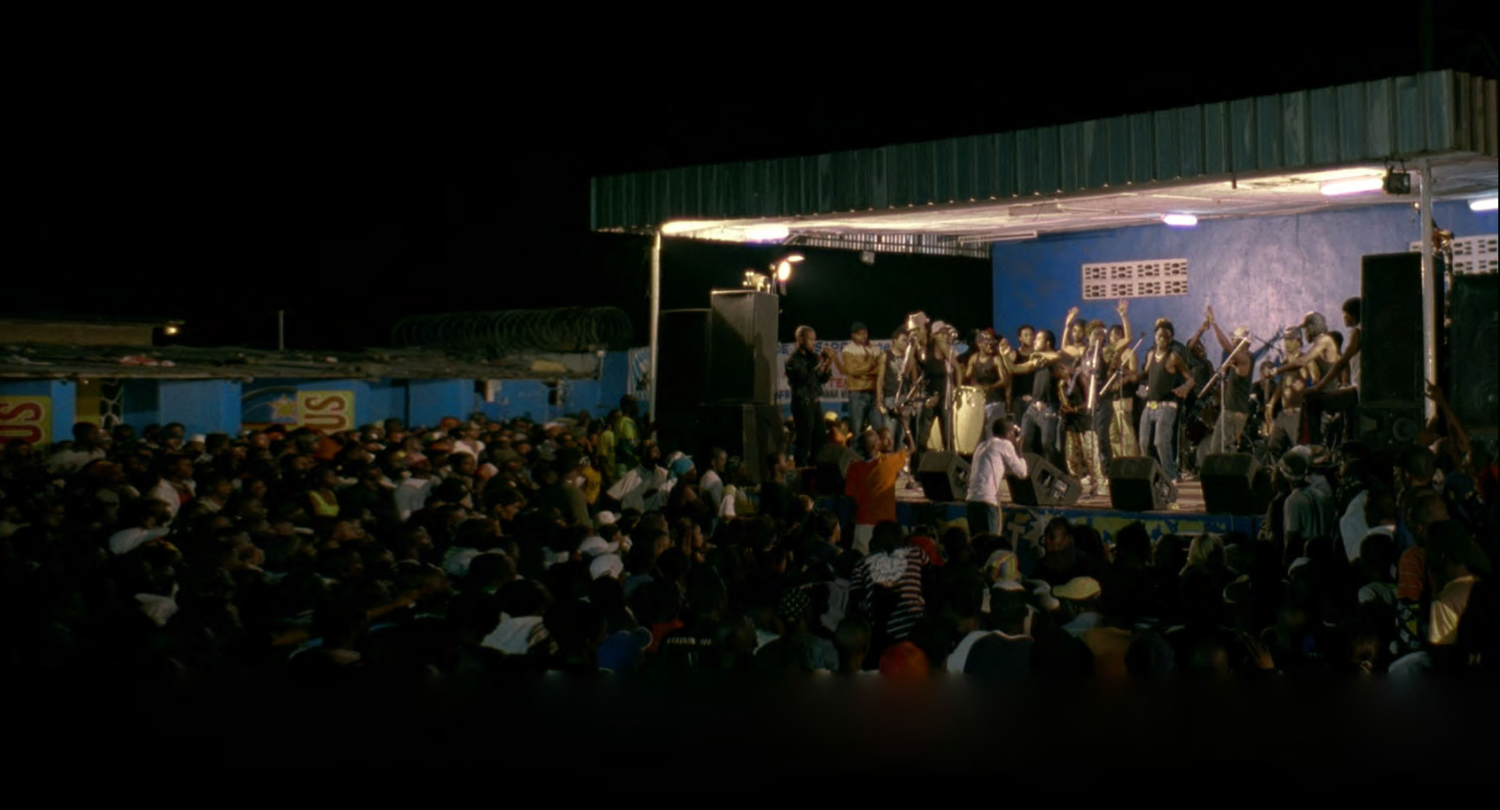Dancing in the Museum

In the summer of 2015, I danced with my family in an art gallery. It’s a wonderful memory of the five of us dancing in a dark room, sheltered between two huge projections, Congolese music playing, and no one else around. I’ve visited many museums and galleries with my family, but this time stood out because we had so much fun. And, as is often the way, we had the most fun when we felt like no one else was watching.
This happy memory was made while experiencing Carsten Höller’s two-screen video installation Fara Fara (2014) at his Hayward Gallery show Decision. The video was recorded in Kinshasa, the capital of the Democratic Republic of Congo, and documents fara fara, a tradition which sees two musicians face off against each other, each trying to continue playing for as long as possible. In the gallery space, we joined the projected Kinshasa crowds, adding in our own bad dancing and general silliness.
It is rare to not be observed in a gallery. Whether it’s by security guards, gallery invigilators or just other visitors, I feel like I’m being watched as I move around the room. Where to look and for how long can feel like a performance. It’s worse when I’m not sure if the work is interactive (is it motion activated?) or when it’s a bit erotic (not wanting to look like a prude or a pervert). Maybe not everyone feels this way but, whether we are aware of it or not, our museums are being policed.
I’ve worked as an invigilator at several art galleries. Being on the other side made me more aware of the strange dynamics at play. While my main task was always to ensure the safety of the art on display, invigilators are also the public face of the gallery and are often tasked with greeting visitors. But contemporary art galleries are really not the most welcoming of spaces. They are often cold, there are rarely any soft furnishings, and you are bound by rules and regulations that are normally unspoken. How can you make people feel welcome when your job is also to watch them from a distance and interfere if they step over a line or carry their bag “incorrectly”?
The surveillance of visitors becomes even more problematic when not all groups receive the same level of scrutiny. As with shops and university campuses, museums and galleries are also guilty of racial profiling. In 2019, a group of Black and Brown school pupils reported being racially profiled by staff at Boston’s Museum of Fine Arts (MFA) and also were subjected to racist comments by other visitors. The museum eventually apologised and the visitors in question were banned. But clearly these students were not made to feel welcome, were expected to misbehave, or simply were not seen to belong. It is difficult to “belong” in a gallery space when your body signifies you as different from the white, middle-class, average visitor.
There is also a plethora of unspoken rules — real or imagined, actively enforced or the result of peer pressure — that first-time visitors might not be aware of. A quick google of “museum etiquette” brings up hundreds of presumably well-intentioned articles which list hints and tips ranging from “don’t touch the artwork” and “don’t take calls” to “reconsider taking your kids”, “don’t openly flirt with your significant other”, and, my personal favourite, “take your time to appreciate the artwork, but don’t take all day.”
All of this culminates in a notion of the “ideal” gallery space which is cleansed of noise, opinion, and fun. To put it another way, a space which aims to be separate from the distractions and texture of the real world, that privileges sight above all other senses and demands reverence and unquestioned respect. White gallery spaces, the so-called “white cube”, were actually designed to rid art of the “distraction” of context, implying a false-sense of neutrality.[1]
This is obviously not the case in every art gallery, and for the last 50 or so years, many arts organisations have been attempting to move from being “temples” of calm and reverence to community spaces or “forums” where dialogue and discussion is encouraged.[2] Tate Modern’s Turbine Hall is a great example of an art gallery space which often encourages noise, running, eating and touching. In the recent Ei Arikawa activation, visitors were even encouraged to draw on the floor. I think after months of lockdowns, touch, conversation and fun is what I am craving more than ever, but whether this same atmosphere carries up to the galleries is questionable.
Of course there are conservation risks and museums have a duty of care to the artwork they display. With this in mind, I think the answer lies not in ripping up the rule book, but maybe being a bit more lenient. When are the times and places that people can be loud in galleries, where food can be eaten and drinks enjoyed? (This often happens for the art-world elite at private views, why not for the general public?) What are the things that can be touched? When can I call my friend and tell them about what I’m experiencing? When can I dance around the gallery with my family like no one’s watching, because maybe, no one is?
[1] I enjoyed what Alice Procter had to say about this, and other types of museums/galleries, in her recent book The Whole Picture: The colonial story of the art in our museum & why we need to talk about it.
[2] The idea of a museum as a temple or a forum was first outlined in Canadian museologist Duncan F. Cameron’s work The Museum, a temple or the forum in 1971.
